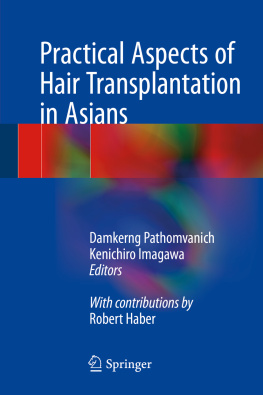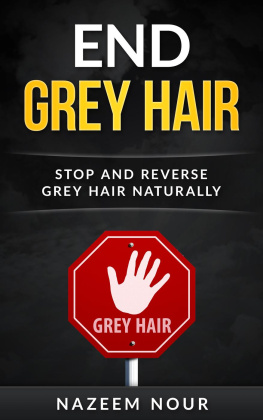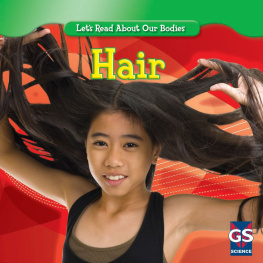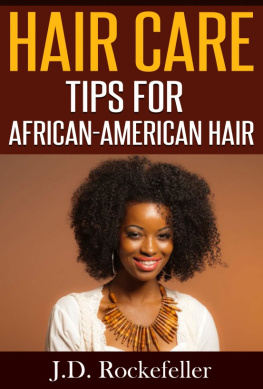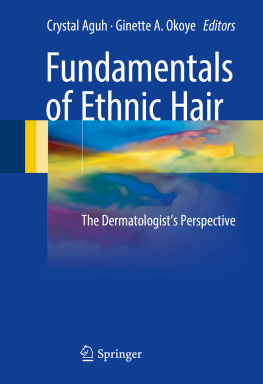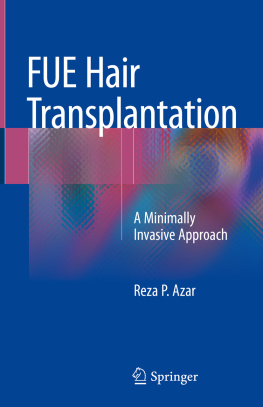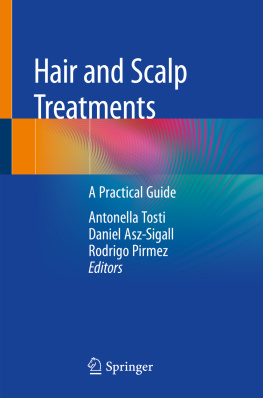Editors
Damkerng Pathomvanich and Kenichiro Imagawa
Practical Aspects of Hair Transplantation in Asians
With contributions by Robert Haber
Editors
Damkerng Pathomvanich
DHT Clinic Private Practice, Bangkok, Thailand
Kenichiro Imagawa
Yokobi Clinic Private practice, Yokohama, Japan
ISBN 978-4-431-56545-1 e-ISBN 978-4-431-56547-5
https://doi.org/10.1007/978-4-431-56547-5
Library of Congress Control Number: 2017964006
Springer Japan KK, part of Springer Nature 2018
This work is subject to copyright. All rights are reserved by the Publisher, whether the whole or part of the material is concerned, specifically the rights of translation, reprinting, reuse of illustrations, recitation, broadcasting, reproduction on microfilms or in any other physical way, and transmission or information storage and retrieval, electronic adaptation, computer software, or by similar or dissimilar methodology now known or hereafter developed.
The use of general descriptive names, registered names, trademarks, service marks, etc. in this publication does not imply, even in the absence of a specific statement, that such names are exempt from the relevant protective laws and regulations and therefore free for general use.
The publisher, the authors and the editors are safe to assume that the advice and information in this book are believed to be true and accurate at the date of publication. Neither the publisher nor the authors or the editors give a warranty, express or implied, with respect to the material contained herein or for any errors or omissions that may have been made. The publisher remains neutral with regard to jurisdictional claims in published maps and institutional affiliations.
This Springer imprint is published by the registered company Springer Japan KK part of Springer Nature
The registered company address is: Shiroyama Trust Tower, 4-3-1 Toranomon, Minato-ku, Tokyo 105-6005, Japan
Foreword
Do we really need another hair transplant textbook? I think that question is part of the Foreword of quite a few textbooks. And why one that focuses on Asians? Couldnt that just be a chapter in one of the standard textbooks? The answers to those questions will be evident within the pages of this text. Few surgical procedures see so many advances on a regular basis. By the time a textbook is published, advances will have made some chapters obsolete, and technique refinements will have changed recommendations found in others. And while some surgeons are content to perform the same technique and see the same results year after year, the really great ones are constantly striving toward the unreachable goal of perfection, and in that pursuit eagerly absorb the contents of the latest articles and textbooks.
I am a lumper and not a splitter, meaning that I do not like to subdivide categories, unless there is a significant benefit to doing so. Thus, I like the simple categories of Caucasian and Asian and African. But as a Caucasian myself, I was ignorant of the remarkable breadth of what constitutes Asian. Only after accepting Damkerngs offer to assist with the editing of this text, and educating myself regarding what it means to be Asian, did I truly understand that only a comprehensive Asian textbook can adequately address the myriad phenotypic, ethnic, and societal aspects of hair transplantation in this diverse category.
This text does not limit itself to the unique hairline design approaches required for brachycephalic skulls, as that would indeed only require a chapter in another text. Rather, this is a comprehensive text including all aspects of hair restoration, from general recommendations and scalp diseases, to strip and FUE donor harvesting, hairline design and implantation techniques, to complications. Staff training approaches are reviewed, as well as adjunctive pharmacologic treatments and non-pharmacologic interventions such as PRP, SMP, and light therapy. In addition, highly advanced techniques such as eyebrow, eyelash, pubic hair, beard, and transgender transplantation techniques are discussed. While I edited, I also learned. Because of language barriers, many of these authors will not be seen at the podium of the ISHRS World Congress, and that is a shame, as clearly the quality of work performed in the included Asian regions is excellent. I feel very fortunate to be one of the first people to actually read this text cover to cover, as I have had the advance opportunity to try some of the many ideas and techniques in my office. And while the task of converting these manuscripts into grammatically correct English was at times arduous, I cannot imagine writing a scientific chapter in a language other than my own, so my profound respect goes to the authors from so many countries who did just that. It was both a pleasure and an honor to work with Damkerng Pathomvanich and Kenichiro Imagawa, two individuals who have successfully bridged the East and the West, and who I am fortunate to call friends, and not just colleagues.
Robert Haber
Beachwood, OH, USA
Preface
Since the publication of our first Asian textbook entitled Hair Transplantation in Asians in 2010, we have come to realize that the scope of the textbook did not cover the entire Asian continent (please see Chap. , The Asian Continent: Its Origin and Evolution, for details). We realize that even among Asians countries, differences in culture, skin texture, and skin color greatly contribute to the success of the procedure and, ultimately, to the patients utmost satisfaction. Hence, the concept of a second edition that encompasses the challenges of hair transplantation in different Asian ethnicities is introduced.
The contents of this new book include the majority of Asian countries where hair transplantation is actively performed with optimal results. Luckily, Asians have only black hair which makes it a bit easier for hair transplant surgeons to deal with in comparison to Caucasians with different color shades.
It was a very arduous task to gather and select prominent physicians from East, Southeast, South, and West Asian regions with extensive experience in hair transplantation for over a decade, to write and give the reader an insight into different hairline designs among Asians and to enlighten us as to the differences in hair transplantation in Asia compared to Europe and North America in terms of techniques and the like. This practical book also caters to all types of readers, be it an entrepreneur, a new doctor yearning to gain experience in hair transplantation, an experienced hair surgeon, or anybody interested in this field. This book will prove to be a valuable tool.
The number of hair transplantation procedures in Asian countries has continued to increase and has actually surpassed the United States of America and Europe, based on the 2015 data from the ISHRS. After one and a half decades, the number of FUE procedures performed in treating male pattern hair loss almost equaled FUT for the first time. It was predicted that FUE might outperform FUT in the future but this remains to be seen. PRP and LLLT which continue to proliferate as alternative treatments for hair loss are included in this textbook. Hair cloning is now trending in popularity and might be available in the United Kingdom soon to treat thinning hair, but it will take a few more years to see the effectiveness of this treatment. Innovations in new FUE machines and punches to improve and minimize transection of the follicles are emerging each year. Hopefully in the future, we might have a device that allows the surgeon to see the mysterious direction of the hair follicle beneath the scalp, which, for now, we blindly try to harvest.

